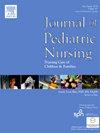海报标题:清洁屏幕:护士长在减少医疗保健相关感染中的作用
IF 2.3
4区 医学
Q2 NURSING
Journal of Pediatric Nursing-Nursing Care of Children & Families
Pub Date : 2025-09-01
DOI:10.1016/j.pedn.2025.06.041
引用次数: 0
摘要
2024年,某城市儿科医院儿科重症监护病房(PICU)的卫生保健相关感染(HAI)有所增加。从1月到6月,护理主任确定了11种不同的HAIs,包括呼吸道感染、血液感染和尿路感染。海地感染被认为是发病和死亡的主要原因,在报告的170万例海地感染中,99,000例导致死亡。PICU需要通过各种方法减少HAIs,包括观察实践、教育、政策审查和流程改变。通过观察发现,许多与患者相关的需求使用个人手机的情况有所增加。工作人员将手机用作手电筒、翻译设备,并在病房内与医护人员进行沟通。手部卫生的符合性接近100% %,但很少观察到手机被清洁。高接触表面的污染可促进微生物传播给其他患者和卫生保健工作者。单位主任提出单位缺乏个人手机消毒是否影响单位的HAI率。电子擦布清洁剂是可用的,但未充分利用,这与研究表明96.7 %的卫生保健工作者在轮班期间从未对手机消毒一致。在清洁前后对五部手机进行了菌落形成单位(cfu)检测。在医院的微生物实验室监测生长情况,最终读数为7天。清洗前平均发现80-90个CFUs,清洗后减少到0-20个CFUs。护理主任利用这些信息开展了一项运动,在轮班前和轮班期间清洁手机、工作站和双手。整个单位都设立了清洁站,并附有教育标志。每个病房都购买了计算器和手电筒,以减少在直接护理患者时使用个人手机。医疗保险费率已经下降,该计划将扩大到所有住院地区。本文章由计算机程序翻译,如有差异,请以英文原文为准。
Poster Title: Clean the screen: The nurse leader's role in decreasing healthcare-associated infections
A Pediatric Intensive Care Unit (PICU) in an urban pediatric hospital had an increase in healthcare-associated infections (HAI) in 2024. The Nursing Director identified 11 different HAIs from January to June including respiratory, bloodstream, and urinary tract infections. HAIs are considered a leading cause of morbidity and mortality and of the reported 1.7 million HAIs, 99,000 have led to death. The PICU had a need to decrease HAIs through various methods including observations of practices, education, policy review and process changes. It was found through observation that the use of personal cellphones for many patient related needs had increased. Staff were using the cellphones as flashlights, translation devices, and for communication with providers within a patient's room. Hand hygiene compliance was near 100 % but it was rarely observed that a cellphone was cleaned. Contamination of high touch surfaces can facilitate the transmission of microbes to other patients and healthcare workers. The unit Director posed whether the unit's lack of personal cellphone disinfection affected the units HAI rates. Electronic wipe cleaners were available but underutilized which is consistent with research that has shown that 96.7 % of the healthcare workers never disinfected their phones during their shift. Five cellphones were tested before and after cleaning for colony forming units (CFUs). The growth was monitored in the hospital's microbiology lab with a final read at the 7-day mark. On average, 80–90 CFUs were found precleaning, decreased to 0–20 CFUs post cleaning. Nursing Directors took this information to create a campaign of cleaning cellphones, workstations, and hands prior and during their shift. Cleaning stations were set up throughout the unit with signage for education. Calculators and flashlights were purchased for every patient room to decrease use of personal cellphones during direct patient care. HAI rates have decreased, and the program will expand to all inpatient areas.
求助全文
通过发布文献求助,成功后即可免费获取论文全文。
去求助
来源期刊

Journal of Pediatric Nursing-Nursing Care of Children & Families
NURSING-PEDIATRICS
CiteScore
3.70
自引率
8.30%
发文量
291
审稿时长
65 days
期刊介绍:
Official Journal of the Society of Pediatric Nurses and the Pediatric Endocrinology Nursing Society (PENS)
The Journal of Pediatric Nursing: Nursing Care of Children and Families (JPN) is interested in publishing evidence-based practice, quality improvement, theory, and research papers on a variety of topics from US and international authors. JPN is the official journal of the Society of Pediatric Nurses and the Pediatric Endocrinology Nursing Society. Cecily L. Betz, PhD, RN, FAAN is the Founder and Editor in Chief.
Journal content covers the life span from birth to adolescence. Submissions should be pertinent to the nursing care needs of healthy and ill infants, children, and adolescents, addressing their biopsychosocial needs. JPN also features the following regular columns for which authors may submit brief papers: Hot Topics and Technology.
 求助内容:
求助内容: 应助结果提醒方式:
应助结果提醒方式:


